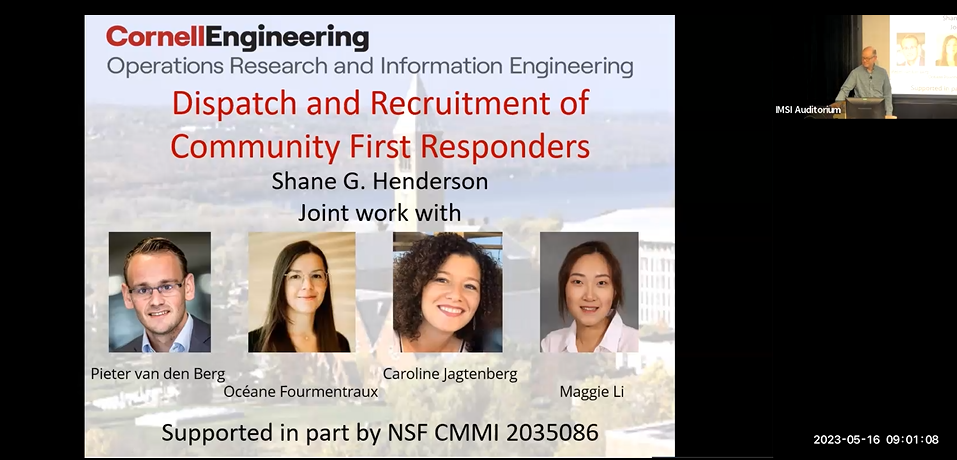Abstract
Patient survival from out-of-hospital cardiac arrest (OHCA) can be improved by augmenting traditional ambulance response with the dispatch of community first responders (volunteers) who are alerted via an app. How many volunteers are needed, from where should volunteers be recruited, and how should they be dispatched? We use a combination of Poisson point process modeling and convex optimization to address the first two questions; the right areas from which to recruit are not always obvious, because volunteers recruited from one area may spend time in various areas across a city. We use a combination of dynamic programming and decision trees to answer the last question, balancing the goal of a fast response to the current patient with the need to avoid disengagement of volunteers that arises when multiple volunteers respond. A case study based on data from Auckland, New Zealand demonstrates the ideas.
